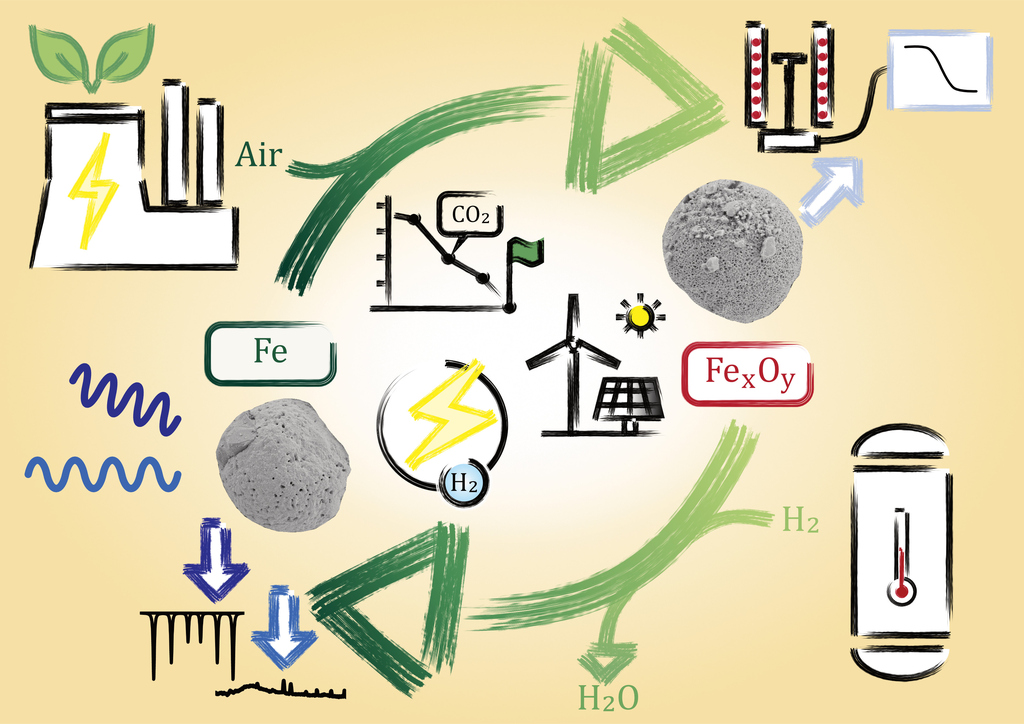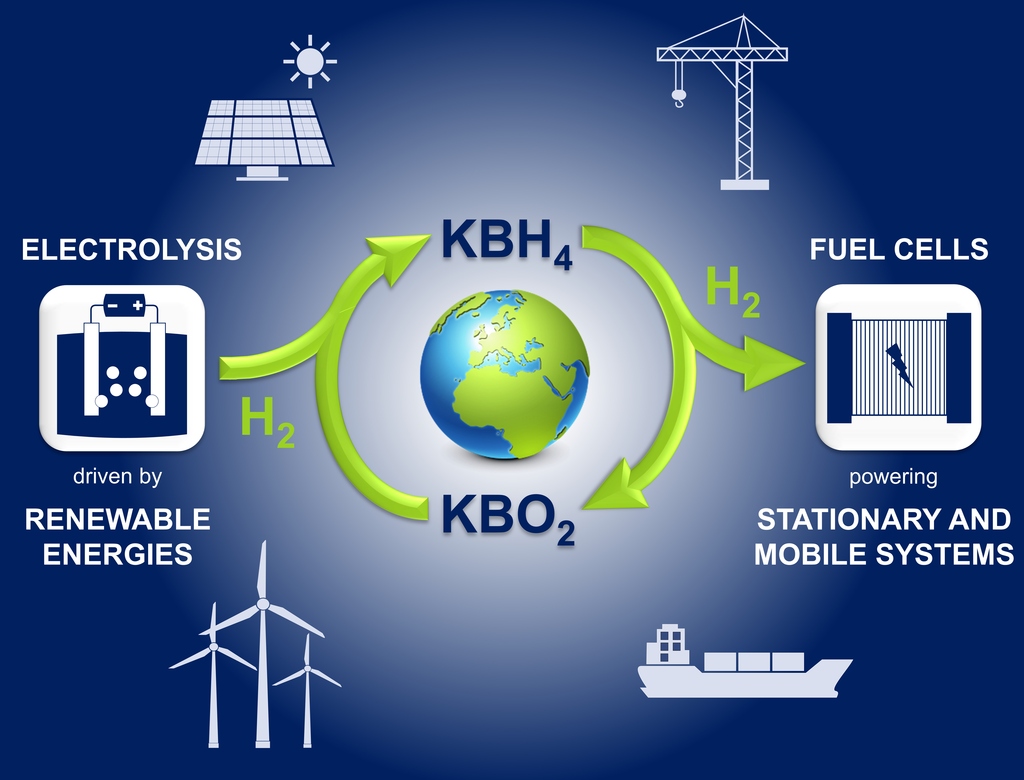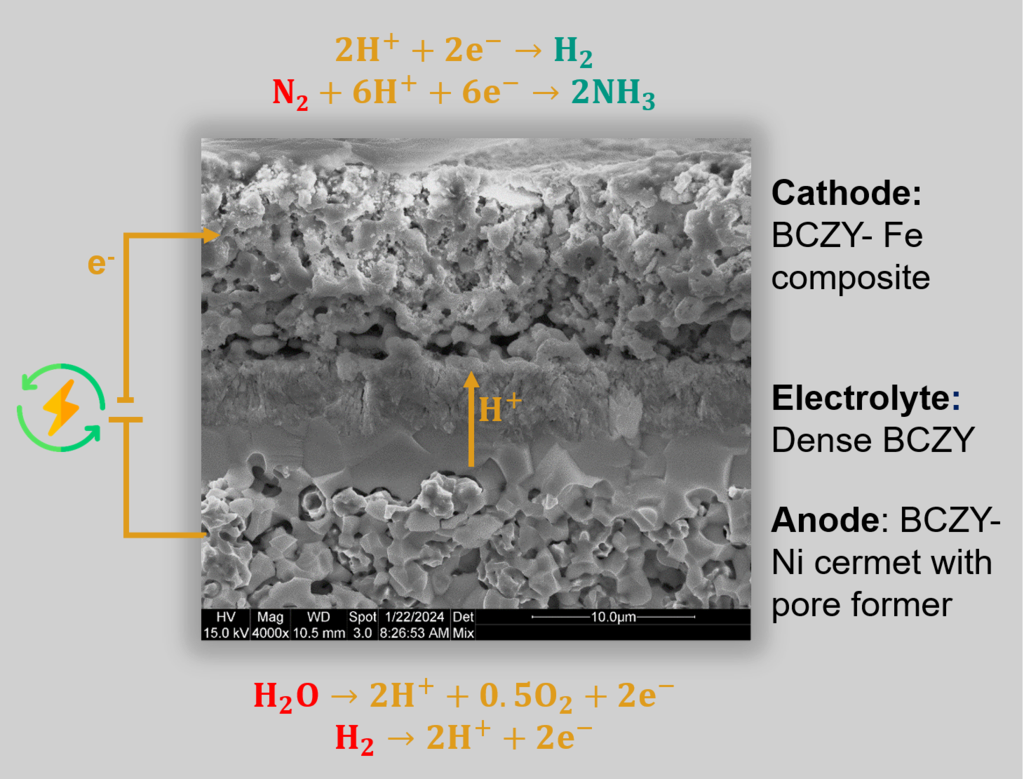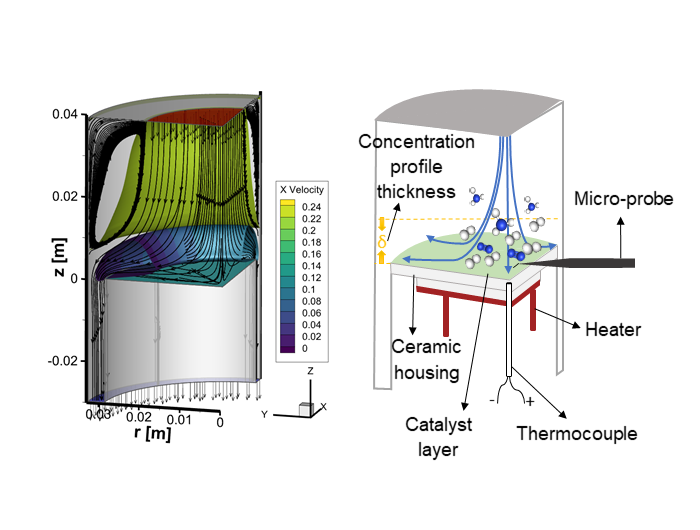Carbon-free chemical energy carriers
Carbon-free energy carriers are studied for storing renewable electrical energy in a circular economy. Here we focus on ammonia, metal borohydride such as KBH4, and reactive metals such as iron and aluminium. For instance, sun and wind energy can be chemically stored by reducing iron oxides with electrolysis hydrogen in regions of inexpensive renewable energy. The time-flexible energy release through iron oxidation then takes place in regions with high energy demand.
Such seasonal, non-toxic, long-term energy carriers provide energy capacity that is no longer available due to the shutdown of nuclear and coal-fired power plants. They additionally compensate fluctuations in domestic renewable electricity, use existing large-scale infrastructures, and secure a political-independent energy supply.

Reactive metals such as aluminum, sodium, magnesium, zinc, and iron are gaining increasing attention as carbon-free chemical energy carriers in a circular energy economy...
more information
Non-fossil fuels are urgently needed for maritime and inland shipping applications to mitigate the sector’s adverse impact on the global climate...
more information
As an alternative to centralized Haber-Bosch, small-scale electrochemical ammonia synthesis has great potential. Avoiding very high pressures ...
more information
The urgent need to address climate change has motivated governments around the world to set ambitious net-zero emissions targets. Hydrogen has emerged ...
more information